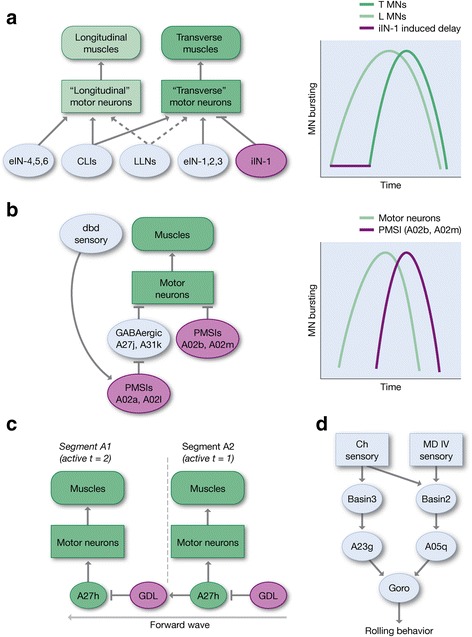Fig. 4.

Circuit motifs used in larval locomotion. a Circuits leading to sequential longitudinal/transverse muscle contraction. Motor neurons innervating both longitudinal and transverse muscle groups (“longitudinal” and “transverse” motor neurons, respectively) receive similar excitatory premotor input, but the motor neurons specifically innervating transverse muscles also receive inhibitory input which leads to a delay in the initiation of transverse muscle contraction. b Circuits that limit the length of motor neuron activity. The PMSI A02b/A02m inhibitory premotor neurons limit the length of motor neuron firing. GABAergic A27j/A31k may also perform this function based on their neurotransmitter and connectivity, but have not yet been functionally characterized. Dbd sensory neurons are thought to be stretch receptors [104], hence activated by muscle relaxation in the segment they are tiling and/or by muscle contraction in the adjacent segments. If so, it is likely that A02a and A02l fire after A02b/A02m and A27j/A31k premotor neurons to remove the inhibition from motor neurons after their target muscles are relaxed, preparing them for the next round of firing. c Circuits that promote smooth progression of the muscle contraction wave during forward locomotion. The A27h premotor neuron activates motor neuron firing in a segment, while also activating the inhibitor GDL neuron in the next most anterior segment, which leads to a delay in motor activity necessary for smooth wave progression. d Circuits that promote larval rolling. Only the local VNC circuit is shown for clarity. Sensory input leads to activation of the Goro “command-like” neuron that is necessary and sufficient for rolling behavior
